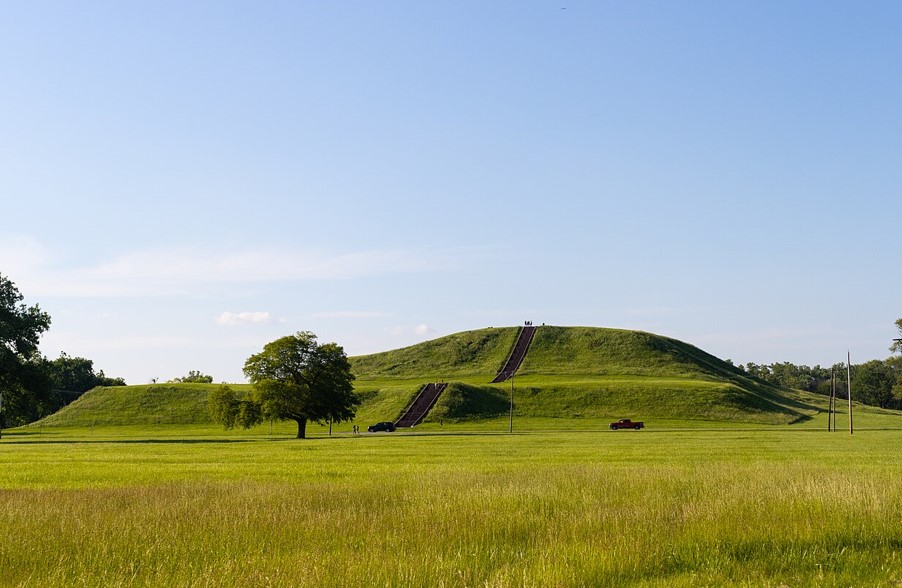Long before the rise of New York or Los Angeles, the largest pre-Columbian city in North America flourished near present-day St. Louis. Cahokia, often forgotten in mainstream history, was a massive urban settlement built by the Mississippian people around 1050 AD. At its height, Cahokia had a population of nearly 20,000—making it larger than London at the same time. This ancient city featured complex urban planning, monumental earthen mounds, and a thriving economy, yet it mysteriously declined by the 14th century.
The centerpiece of Cahokia is Monks Mound, the largest prehistoric earthwork in the Americas. Standing over 100 feet tall, it served both religious and political purposes. Surrounding it were plazas, residential neighborhoods, and a wooden “Woodhenge” used for solar calendar tracking. Archaeological findings suggest that Cahokia was a hub of trade, art, and astronomy, deeply connected to nature and spirituality. Despite the lack of a written language, its engineering and societal complexity are undeniable.
Modern historians and archaeologists are still uncovering secrets of Cahokia, challenging outdated narratives that underestimate Native American civilizations. Its rise and fall remain partly unexplained, but its legacy tells a powerful story of innovation, spirituality, and urban development long before European contact. Cahokia stands as a reminder that history on Earth is richer and more diverse than we often acknowledge.







